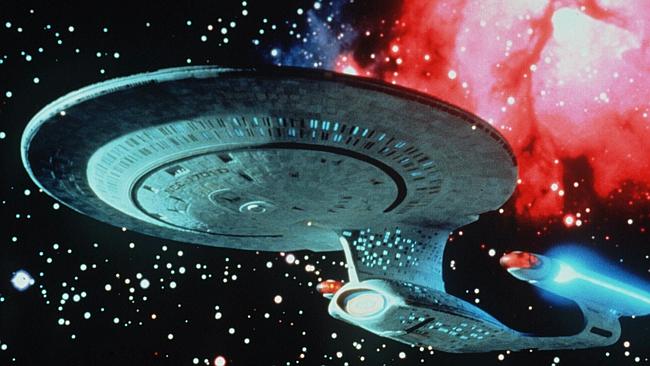David Pares believes he has developed a proof-of-concept for a warp drive motor
WORKING by torch inside his garage, a science professor and former air force meteorologist claims he has created the holy grail of sci-fi technology.

WORKING by torch inside his Omaha garage, a science professor and former air force meteorologist claims he has created the holy grail of sci-fi technology.
David Pares believes he has developed a proof-of-concept for a warp drive motor— a propulsion system that allows a spacecraft to travel at speeds faster than light.
The concept of warp drive technology has been made popular through science fiction movies such as Star Trek, in which spacecraft’s quickly move from one galaxy to another avoiding what would usually be thousands of years of transit time.
However, it was an encounter with a UFO when he was 16 that first sparked Mr Pares’s interest in the concept.
Mr Pares said he was at his home in upstate New York when he witnessed a silver saucer fly into the distance at hypersonic speed.
“I sighted a UFO and I can describe to you in great detail what I saw,” he told Motherboard.
“That was one of the driving forces and what pushed me towards engineering and the sciences, and learning as much as I could about every discipline possible because they’re all interconnected.
“If I were just in the physics discipline, I would have never figured this out.

While Mr Pares stands by his claims, the larger scientific community is sceptical.
A common argument presented to Mr Pares is Einstein’s equation that predicts the ability to travel faster than the speed of light would require close to all the energy in the universe.
Mr Paces isn’t fazed by this argument and suggests the power needed is more likely equivalent to the mass of a star and can be possible with electromagnetism — a type of physical interaction that occurs between electrically charged particles.
“The theoretical physicists all believed that you couldn’t make a warp bubble unless you had the exotic energy of antimatter or dark matter,” he said.
“If I would have believed those guys, I’d have put down my Etch-a-Sketch, walked away and drank a beer.”
This is why Mr Pares is confident he can answer one of the biggest riddles in science from a dinky DIY workshop based out of his garage.
“The only difference between a garage and [NASA’s] lab is that I’ve got lower overhead,” he said.
“We’ve been able to show all the numbers in our graphs that indicate that we’re producing an artificially induced pulling action.”

Despite impressive claims, Mr Pares believes he would have to build the Starship Enterprise before his discoveries gained any traction in the scientific community
“We’re held to a double standard,” he said.
“If NASA did what we did and had the measurements we have today, they’d be parading them around and getting the Nobel prize in Physics.”
Having created the ion engine responsible for sending the Dawn spacecraft into orbit, propulsion physicist John Brophy knows how difficult it can be to attract the interest of scientific institutions.
Mr Brody said science institutions are cautious to give funding to something that isn’t a relatively sure bet.
“If there’s a compelling enough reason to do it, NASA will do it,” he told Motherboard.
“Advanced propulsion concepts work is like parsley: you want to have a little bit on your plate but you don’t want to have too much.
“The vast majority of them probably won’t pan out, but you want to make sure you don’t miss something important.”
Despite the lack of funding, Mr Pares said he will continue to invest him own time and money into the project because he believes it will eventually pay dividends.



